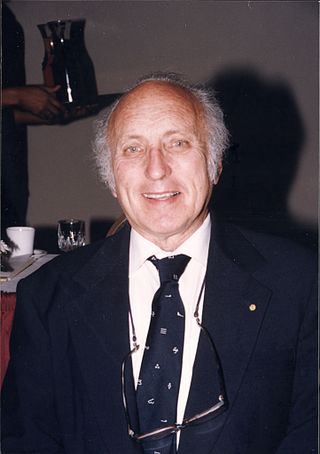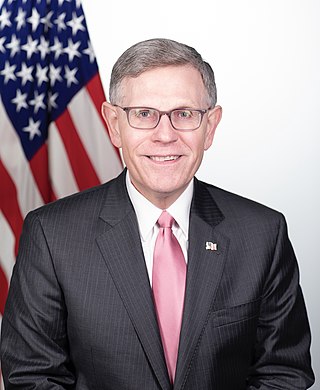Related Research Articles
The Rosenstiel School of Marine, Atmospheric, and Earth Science is the University of Miami's academic and research institution for the study of oceanography, atmospheric, and earth sciences. The Rosenstiel School is located 8 miles (13 km) east from the University of Miami's main Coral Gables campus on Virginia Key in Miami, Florida, United States.
The Texas A&M University College of Geosciences was an academic college of Texas A&M University in College Station, Texas. The college had six academic departments and programs, including Atmospheric Sciences, Geography, Geology & Geophysics, Oceanography, Environmental Programs in Geosciences, and the Water Management & Hydrological Science (WMHS) Program. In addition, the College hosted three Research Centers and Institutes: Geochemical & Environmental Research Group (GERG), Integrated Ocean Drilling Program (IODP), and Texas Sea Grant College Program.

The National Severe Storms Laboratory (NSSL) is a National Oceanic and Atmospheric Administration (NOAA) weather research laboratory under the Office of Oceanic and Atmospheric Research. It is one of seven NOAA Research Laboratories (RLs).
The Cooperative Institute for Severe and High-Impact Weather Research and Operations (CIWRO) is one of 16 NOAA Cooperative Institutes (CIs), hosted at the University of Oklahoma. Before Oct. 1, 2021, it was known as the Cooperative Institute for Mesoscale Meteorological Studies (CIMMS). The CIMMS/CIWRO, a research organization created in 1978 by a cooperative agreement between the University of Oklahoma (OU) and the National Oceanic and Atmospheric Administration (NOAA), promotes collaborative research between NOAA and OU scientists on problems of mutual interest to improve basic understanding of mesoscale meteorological phenomena, weather radar, and regional climate to help produce better forecasts and warnings that save lives and property. CIMMS/CIWRO research contributes to the NOAA mission through improvement of the observation, analysis, understanding, and prediction of weather elements and systems and climate anomalies ranging in size from cloud nuclei to multi-state areas.

The National Weather Center (NWC), on the campus of the University of Oklahoma, is a confederation of federal, state, and academic organizations that work together to better understand events that take place in Earth's atmosphere over a wide range of time and space scales. The NWC partners give equal attention to applying that understanding to the development of improved observation, analysis, assimilation, display, and prediction systems. The National Weather Center also has expertise in local and regional climate, numerical modeling, hydrology, and weather radar. Members of the NWC work with a wide range of federal, state, and local government agencies to help reduce loss of life and property to hazardous weather, ensure wise use of water resources, and enhance agricultural production. They also work with private sector partners to develop new applications of weather and regional climate information that provide competitive advantage in the marketplace.

The US National Center for Atmospheric Research is a US federally funded research and development center (FFRDC) managed by the nonprofit University Corporation for Atmospheric Research (UCAR) and funded by the National Science Foundation (NSF). NCAR has multiple facilities, including the I. M. Pei-designed Mesa Laboratory headquarters in Boulder, Colorado. Studies include meteorology, climate science, atmospheric chemistry, solar-terrestrial interactions, environmental and societal impacts.

The Department of Atmospheric and Oceanic Sciences of McGill University is the largest university atmospheric-oceanic sciences group in Canada. In 2012, it has 11 Faculty and 6 Associate Faculty members, 5 support staff, 14 research associates and postdoctoral fellows, and 31 graduate students. It is known worldwide, in particular for weather radar research and Arctic studies. It has operated the second oldest weather observatory in Canada since 1862.

The Verification of the Origins of Rotation in Tornadoes Experiment are field experiments that study tornadoes. VORTEX1 was the first time scientists completely researched the entire evolution of a tornado with an array of instrumentation, enabling a greater understanding of the processes involved with tornadogenesis. A violent tornado near Union City, Oklahoma was documented in its entirety by chasers of the Tornado Intercept Project (TIP) in 1973. Their visual observations led to advancement in understanding of tornado structure and life cycles.

The Advanced Radar Research Center (ARRC) is an academic radar program within the United States. Its core mission revolves around the realm of interdisciplinary research, where it researches radar solutions to address a myriad of complex societal challenges.

Prem Chand Pandey is an Indian space scientist, planetary scientist, and academic in the fields of satellite oceanography, remote sensing, atmospheric science, the Antarctic and climate change, and also he is the founding director of the National Centre for Polar and Ocean Research (NCPOR).

Eugenia Enriqueta Kalnay was an Argentine meteorologist and a Distinguished University Professor of Atmospheric and Oceanic Science, which is part of the University of Maryland College of Computer, Mathematical, and Natural Sciences at the University of Maryland, College Park in the United States.

Howard Bruce Bluestein is a research meteorologist known for his mesoscale meteorology, severe weather, and radar research. He is a major participant in the VORTEX projects. A native of the Boston area, Dr. Bluestein received his Ph.D. in 1976 from MIT. He has been a professor of meteorology at the University of Oklahoma (OU) since 1976.

The Chengdu University of Information Technology, formerly the Chengdu Meteorological College (成都气象学院), is a provincial public university in Chengdu, Sichuan, China. The university is affiliated with the Province of Sichuan, and co-sponsored by the China Meteorological Administration and the Sichuan Provincial Government.

Susan K. Avery is an American atmospheric physicist and President Emerita of the Woods Hole Oceanographic Institution (WHOI) in Massachusetts, where she led the marine science and engineering research organization from 2008–2015. She was the ninth president and director and the first woman to hold the leadership role at WHOI. She is Professor Emerita at the University of Colorado, Boulder (UCB), where she served on the faculty from 1982–2008. While at UCB she also served in various administrative positions, including director of the Cooperative Institute for Research in Environmental Sciences (CIRES), a 550-member collaborative institute between UCB and the National Oceanic and Atmospheric Administration (NOAA) (1994-2004); and interim positions (2004-2007) as vice chancellor for research and dean of the graduate school, and provost and executive vice chancellor for academic affairs. Currently she is a senior fellow at the Consortium for Ocean Leadership in Washington, D.C.

The contributions of women in climate change have received increasing attention in the early 21st century. Feedback from women and the issues faced by women have been described as "imperative" by the United Nations and "critical" by the Population Reference Bureau. A report by the World Health Organization concluded that incorporating gender-based analysis would "provide more effective climate change mitigation and adaptation."
The College of Computer, Mathematical, and Natural Sciences (CMNS) at the University of Maryland, College Park, is home to ten academic departments and a dozen interdisciplinary research centers and institutes. CMNS is one of 13 schools and colleges within the University of Maryland, College Park.

Edwin Kessler III was an American atmospheric scientist who oversaw the development of Doppler weather radar and was the first director of the National Severe Storms Laboratory (NSSL).
The William J. and John F.Kennedy College of Sciences at the University of Massachusetts Lowell is so named for the Kennedy family and their contributions to the campus. John F. Kennedy is an alumnus of the Lowell Technological Institute Class of 1970. The Lowell Technological Institute merged with the Lowell State College to become the University of Lowell in 1972. It joined the UMass system in 1991 to become UMass Lowell.

Kelvin Kay Droegemeier is an American research meteorologist, most recently having served as director of the White House Office of Science and Technology Policy. Droegemeier is known for his research in predicting the development of extreme weather events, and previously served as Oklahoma Secretary of Science and Technology and the vice president for research at the University of Oklahoma. He currently is serving as a professor and special advisor to the chancellor for science and policy at the University of Illinois Urbana-Champaign.

James F. "Jeff" Kimpel was an American atmospheric scientist with expertise on severe storms who was a provost of the University of Oklahoma (OU) and director of the National Severe Storms Laboratory (NSSL).
References
- ↑ "54321SoMDirectorPosition20070919.pdf" (PDF). University of Oklahoma. Retrieved 2007-12-13.